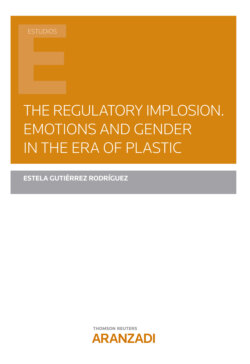Читать книгу The Regulatory Implosion. Emotions and Gender in the Era of plastic - Estela Gutiérrez Rodríguez - Страница 18
На сайте Литреса книга снята с продажи.
6.1.2. Bisphenol A (BPA)
ОглавлениеBisphenol A (BPA) was synthesized in 1891 by Aleksandr Dianin and used for the manufacture of plastic products since the 1960s. Since 1936, diethyl ethylbestrol (DES) has been used in medicine to prevent the risk of miscarriage and treat prostate cancer, among many other health disorders47.
In 1936, BisphenolA (BPA) was discovered as well, it has a formulation very similar to DES, and since then both were already classified as synthetic estrogens. However, BPA was dismissed by medical science for not being as effective as estradiol48.
Since then, the chemical industry that found its potential, sought multiple uses for it. In 2015 it became one of the hormonal altering chemicals, with the highest production in the world.
BPA was quickly incorporated into multiple products used daily by citizens, and since June 2017 we can find it regulated in the REACH as an hormone disrupting substance49.
According to the ECHA info-letter, tons of this substance are annually produced and/or imported into Europe, and it have being recognized to interfere with male fertility, or damaging the fetus and, it is toxic to aquatic life with long-lasting effects. Among many other dysfunctionsit can cause serious eye problems, cause allergic skin reactions and respiratory irritations50. Because of this, all BPA manufacturers, importers or suppliers were required to classify and label BPA-containing mixtures as Category 1B reproductive toxicity by March 1, 201851.
Human exposure to this substance is massive, continuous and universal. It is alarming that the main sources of exposure are, for example, the dust present in the house coming from electronic devices,when manufactured are coated with polychrome to prevent themto catch fire. They release particles of mentioned coating by the heat generated when they are on, even when they are in standby mode with the red light on. The tin cans’coating, or the plastic film which wraps fish or meat in the supermarkets. Baby bottles, mainly in those countries where the regulations related to this subject are missing. Thermal paper purchase receipts, which has already been banned in France and regulated in the rest of Europe. BPA is present in all types of plastic bottles or containers, made from polycarbonate derivatives.
The presence of endocrine disruptors in dental sealants is also a concern (in practice of dental medicine, bisphenol A is required in the composite epoxy resin used to make dental operations less invasive and more aesthetic)52.
We also find it in many other products in the market, such as paints, glues, food containers or construction materials. Also the so-called epoxy resins are prepolymers derived mainly from BisphenolA (75% of the resins globally are made from BPA).
In 2011, a spanish study was carried out with the aim to analyze the degree of exposure to phenols and phthalates in pregnant women and their children. The study analyzed urine samples from 120 pregnant women and 30 4-year-old children. Results showed that all samples analyzed from pregnant women contained 2.2 nanograms/ml of Bisphenol A, and allthose from 4-year-old children, contained 4, 4 nanograms/ml of Bisphenol A.
So we can see again, not only that exposure to EDC is clear, but that childhood is doubly vulnerable53.
